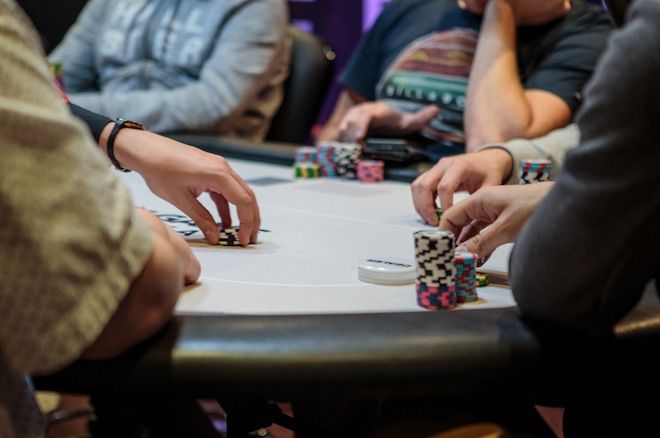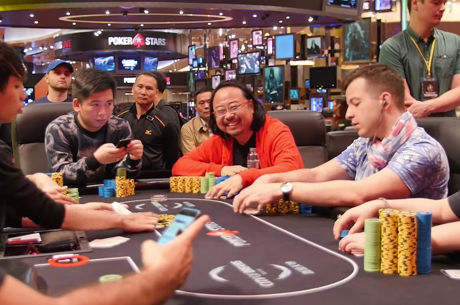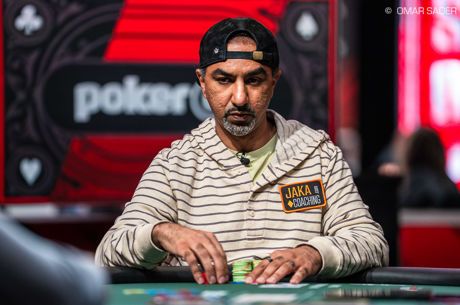10 Tips for Sit & Go Success: Middle Stage Strategy

Last time, we discussed beginner strategy for the early levels of a sit & go. This week we will explore how that strategy changes as we enter the middle stage of the tournament.
I will define the middle stage as the level where the average effective stack is around 20 big blinds or less with at least five players remaining. Your main goal in the middle stage is to preserve your fold equity by shoving and calling correctly.
Shoving Correctly
Three-Bet Shoving with 15-20 BBs Effective
When there is a raise before the action gets to you at this stage, you should generally go all in or fold with the only exception of maybe calling with a few marginal hands in the big blind. You should be fine going all in over any raise with a range of {99+, AQo+}.
Of course, this range can be expanded based on how the opener has been playing. This is where you will use all the reads you gathered, or the notes you've taken if playing poker online, while you were watching the action at the table after folding so much in the early levels.
If you have notes that a player raise-folds a lot, you can expand this range to something like {77+, AJo+, KQs+} from pretty much any position and further widen it by a few hands at a time as you get into later position. This range widening will continue until you are in the big blind.
From the big blind, if you are facing an open from a player who raises something like 30 percent of hands, but will only call a shove with around a quarter of that range, you can profitably go all in with almost any two cards. If you know he is loose, but are not sure how often he will call, maybe you should stick to the top 50 percent of hands or so. If he is calling off with a larger percentage of his opening range, you should choose a more value-oriented range for three-bet shoving.
Open-Shoving with Under 15 BBs effective
If you have significantly less than 15 BBs, you may not have enough fold equity to three-bet shove very wide over a raise depending on the stack size and strategy of the opener. If this is the case, lean towards folding your weaker hands and waiting for a spot to open-shove them according to the Nash equilibrium shoving strategy.
Poker pro Max Silver created an app called SnapShove that can help with this situation. Simply enter the number of players, ante size, effective stack size and your position, and this tool will tell you exactly which hands you can open-shove.
There are two slight adjustments you can make to this strategy if you have notes that show your opponents are too tight.
If you think they are unlikely to three-bet shove light or call opens very often, you may be able to get away with raise-folding some small ace-blockers �� i.e., an AxXx hand with a small kicker �� instead of shoving with them. If your opponents react to a 2.5 BB raise the same way they do a 15 BB shove, you should use the smaller raise size to reduce variance.
Also, if you think that they are likely to call your opens very often, but they will not call correctly if you shove, you may be able to get away with shoving slightly wider than the Nash ranges and still win more than your fair share of pots. I find this is often the case when you shove from the later positions, but not from the early positions.
Calling Shoves Correctly
Calling Three-Bet Shoves
If you have more than 15 BBs and no one raises before it gets to you, open-shoving as a bluff is generally not a great idea because the amount you stand to win isn't worth the amount you are risking.
When this is the case, it makes sense to raise-call with the top of your range and raise-fold to big shoves with a few bad hands like small ace-blockers for balance. Be careful not to have too many raise-folds in this range, because that is easily exploitable as mentioned in the previous section.
With the middle of your range, it is not a bad idea to open-shove up to 20 BBs with marginal value hands like medium pairs. These hands do not play that well postflop and can get called by worse even for 20 BBs.
For example. If you have a hand like 9x9x in the hijack, it may make more sense to shove it for 20 BBs instead of raising smaller which opens up the possibility of having to play it postflop in a multiway pot or having to call a shove from a hand like Jx10x-suited that would have folded to your shove. Don't worry. You'll still get called by 8x8x. That is the best of both worlds.
Calling Open-Shoves
If someone shoves before the action gets to you, make sure you aren't calling too tightly. Remember, this allows the opener to shove wider than Nash and steal more than his fair share of pots. If you suspect that a player is using the Nash shoving range, you have to be willing to call with a range at least somewhat close to the Nash calling range. Again, SnapShove can help you improve in this area.
However, this is easier said than done. According to the app, at a six-handed table with 10 percent antes, a player in the small blind can open shove 15 BBs with around 55 percent of hands which includes 8x7x-offsuit. If he is shoving this wide, you can call with around 34 percent of hands which includes Jx10x-offsuit.
Is this a call you would normally make? For most players, the answer would be a definite no. If you have a read that a player is shoving this wide, you can do better than most players by finding a call in this spot. To reiterate my earlier point, if your opponents aren't capable of making this call, you can shove even wider than 55 percent from the small blind in this situation �� maybe even up to 100 percent �� if the big blind is calling much tighter than the 34 percent Nash calling range.
If you suspect that your opponent isn't shoving as wide as he should, you can use SnapShove to tighten him up and adjust your calling range. Maybe you think this particular player is only shoving around 20 percent from the small blind. If so, you can use the app to pretend that the shove came from an earlier position where that range is closer to Nash.
For instance, a hijack shoving range should be around 20 percent, in which case SnapShove suggests you should call with around 12 percent. What you don't want to do is call with the 34 percent range if your opponent is making the mistake of only shoving 20 percent from the small blind.
If You Double, Prepare for the Bubble
The great thing about the middle stages of a SNG is that you will be going all in often which means you will eventually double or bust. This will be a welcome bit of excitement after all the folding and note taking in the early levels.
If you are fortunate enough to double up, you will continue with this strategy if you are still one of the short stacks. Otherwise, you should remain patient and not take huge risks against the other medium or big stacks until the last short stack busts, leaving only four players.
This stage of the "standard" nine-handed sit & go for which only the top three spots make the money is called the bubble, and we will discuss strategy for it next week.
Also in this series...
- SNG Pros & Cons
- Assessing Structures and Speeds
- Introducing the Independent Chip Model
- Practical Applications of ICM
- Early Level Play
- On the Money Bubble
- Three-Handed Play
- How To Play Heads-Up
- Managing Your SNG Bankroll
Ready to start giving sit & gos a try? Put these tips into practice at partypoker.
In this Series
- 1 10 Tips for Sit & Go Success: SNG Pros and Cons
- 2 10 Tips for Sit & Go Success: Assessing Structures and Speeds
- 3 10 Tips for Sit & Go Success: Introducing the Independent Chip Model
- 4 10 Tips for Sit & Go Success: Practical Applications of ICM
- 5 10 Tips for Sit & Go Success: Early Level Play
- 6 10 Tips for Sit & Go Success: Middle Stage Strategy
- 7 10 Tips for Sit & Go Success: On the Money Bubble
- 8 10 Tips for Sit & Go Success: Three-Handed Play
- 9 10 Tips for Sit & Go Success: How To Play Heads-Up
- 10 10 Tips for Sit & Go Success: Managing Your SNG Bankroll









